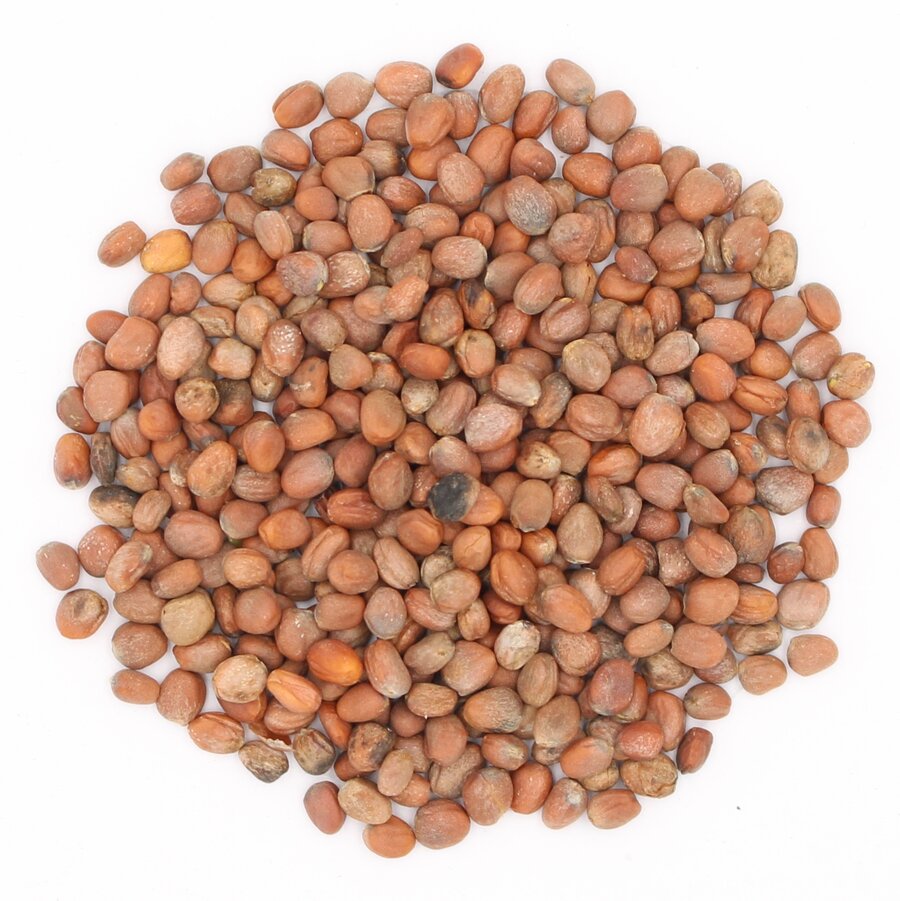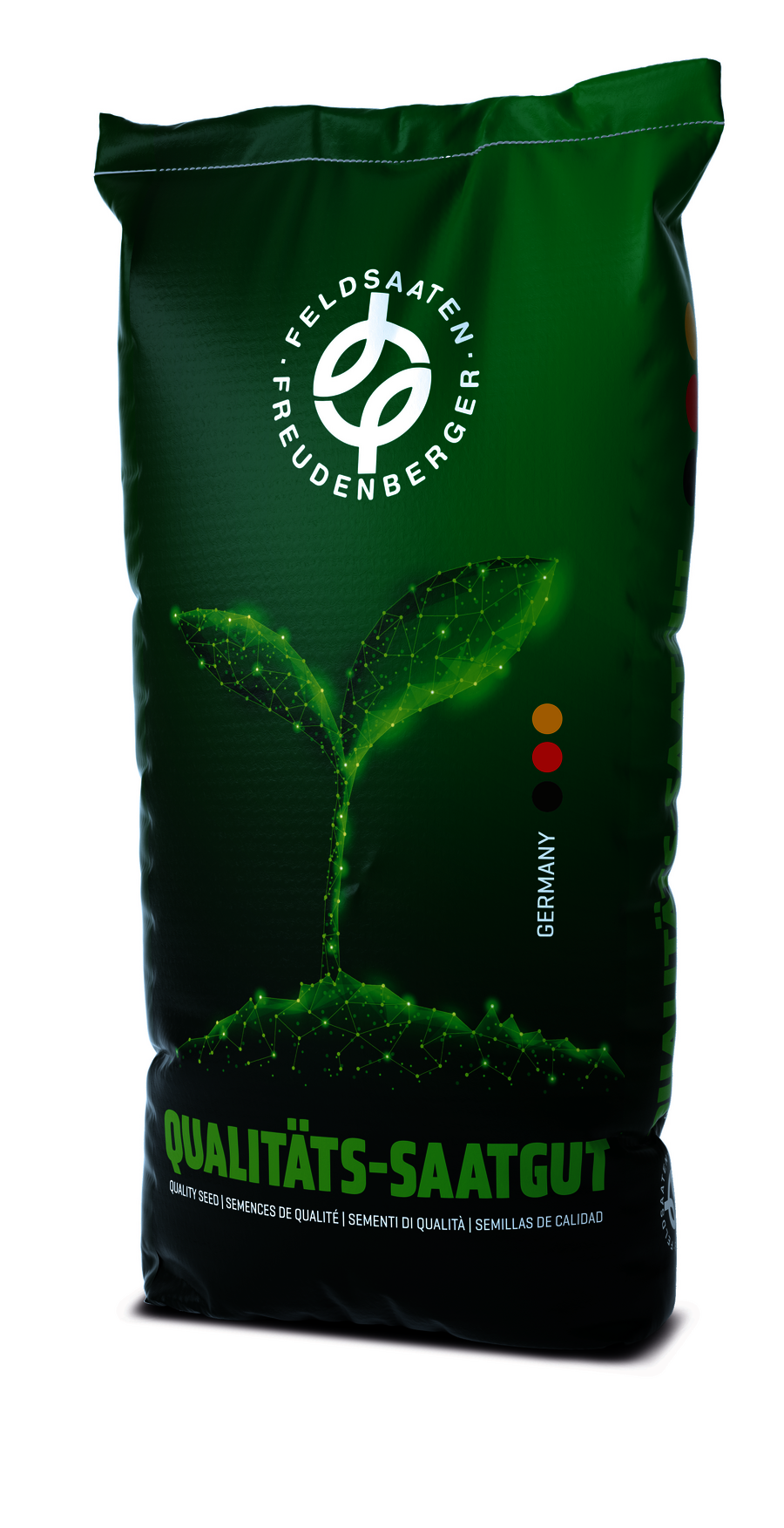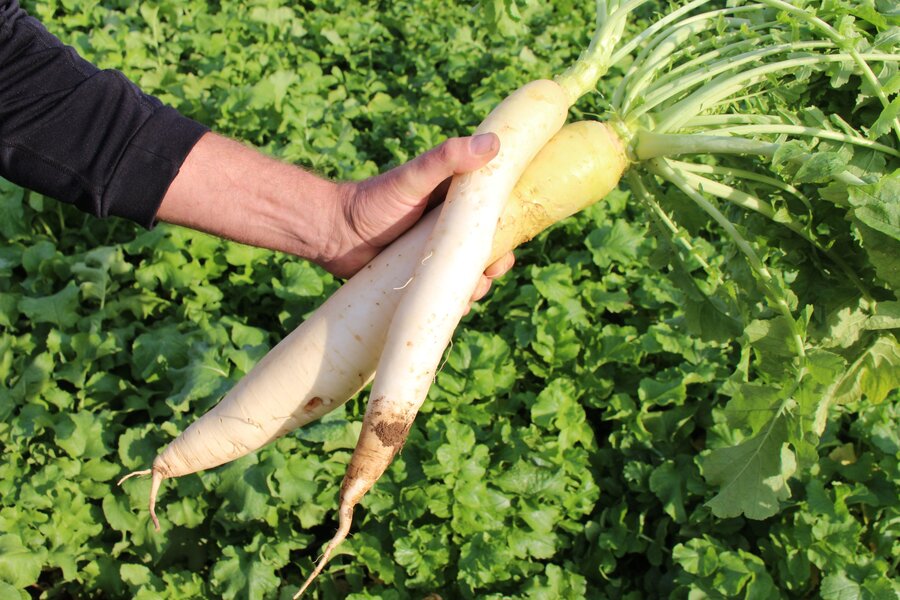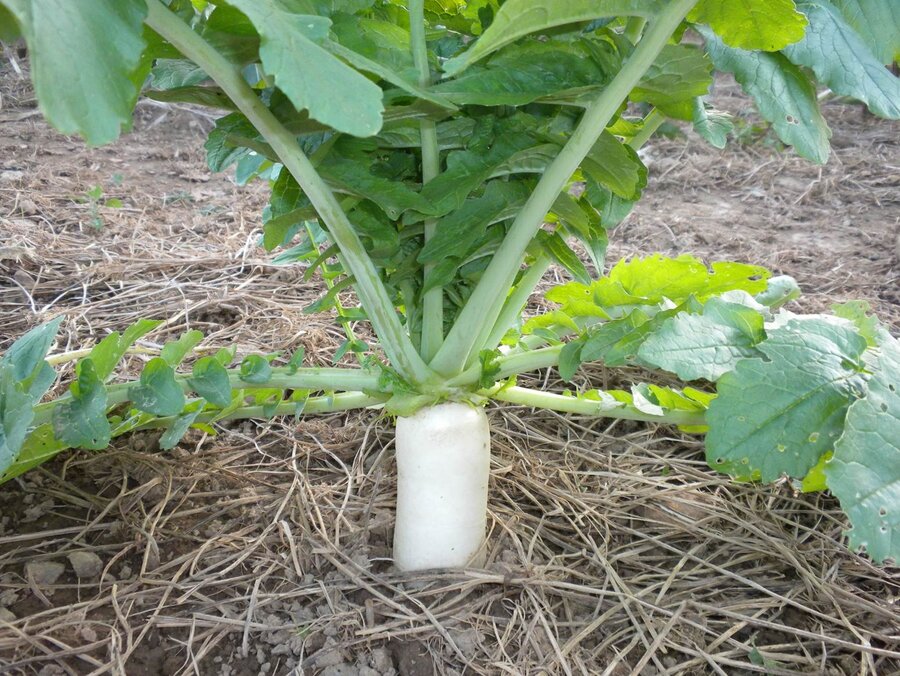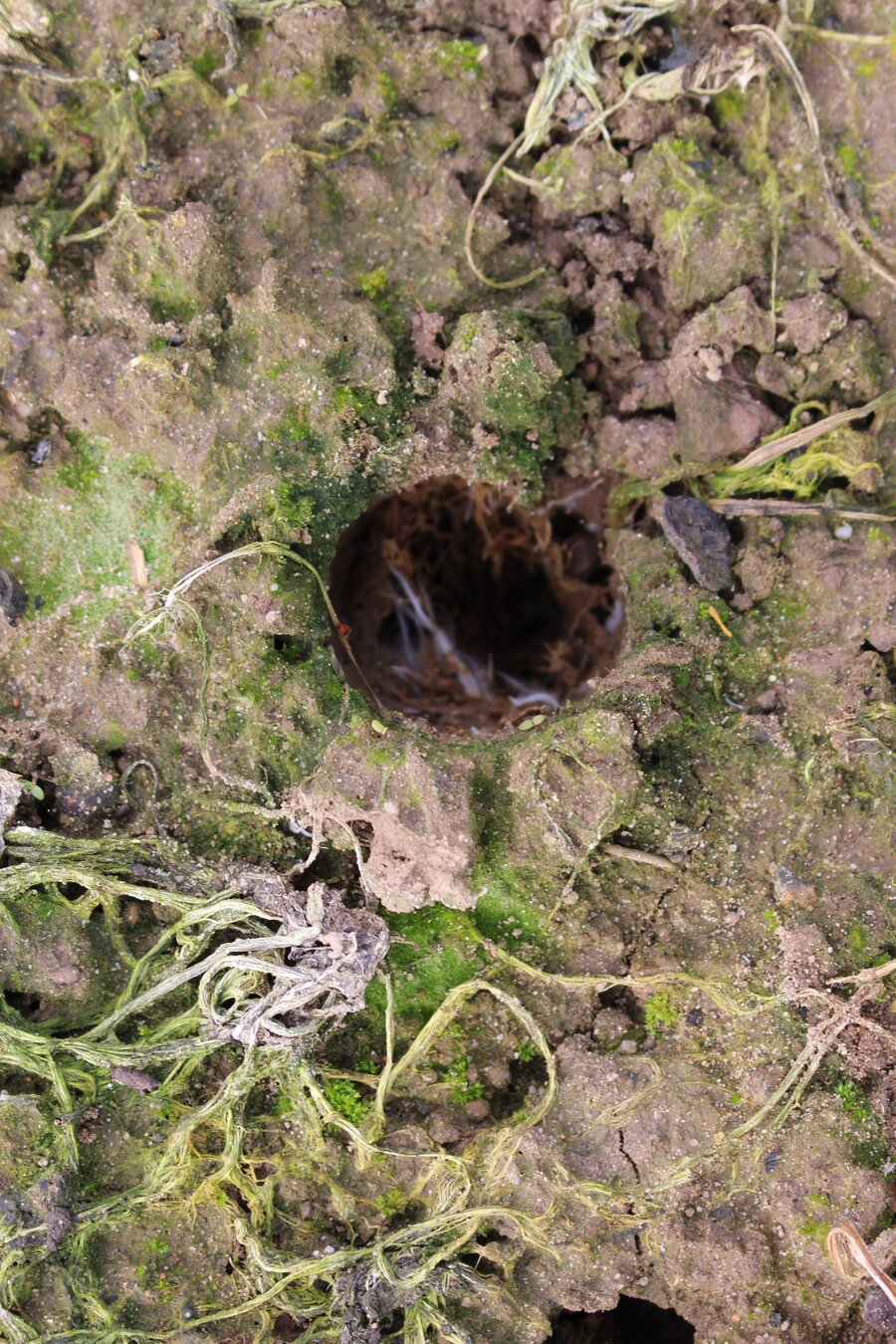Oriental radish
Raphanus sativus var. longipinnatus L.
In recent years, more and more attention has been given to catch crop cultivation in the USA, which has the most agricultural land of any country in the world. Soil health and soil structure are on everyone’s lips these days, and more and more fields are being restored each year using cover crops. By far the most dominant cover crop being used in the USA is the oriental radish, also well-known in Europe. With their rapid autumn growth, oriental radishes take up plenty of nitrogen, which they store over winter. When they decay in the following year, this nitrogen is released back into the soil, where it can be used by the following crop rather than being leached away over the winter months. The holes that the rotting radishes leave in the soil also help the soil to warm up faster in the spring. Subsequent crops can thus be sown a little earlier and germinate more quickly. These benefits pay dividends when planting plants that prefer warm conditions, like maize.
Bundle: 25 kg
Category: Catch crops
- Varieties
- Sowing and fertilising instructionsSowing rate:
6–8 kg/ha
Distance between rows:35–50 cm
Sowing period:mid August
Fertiliser:max. 60 kg N/ha as catch crop
Sowing depth:1–2 cm
- DownloadsMore information

